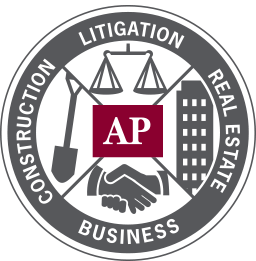Business Organizations: The Sole Proprietorship
Are you putting all of your personal assets at risk every time you undertake any activity related to your business? If you operate as a sole proprietor or if you are a partner in a general partnership, you may be doing just that.
The law in most states allows for a number of different forms of business ownership. These forms of ownership fall into two general categories. The first category includes those in which the owner is personally responsible, or liable, for all of the obligations of the business. The second general category allows the owner to shield personal assets from most of the financial obligations of the business.
In this article, we will explore the characteristics of the form of business known as a sole proprietorship. This series of articles on business forms will continue in the next issue with a discussion of partnerships.
What is a Sole Proprietorship?
The sole proprietorship is the oldest and most common form of business organization. Because forming a sole proprietorship is so simple, it is estimated that as many as 70% of all businesses operate as sole proprietorships.
A sole proprietorship is a business owned by one person which is legally undifferentiated from its owner. There are no other owners, including a spouse or a silent investor, though there may be an unlimited number of employees. A sole proprietorship is not a separate entity from the person who owns the business.
Advantages of a Sole Proprietorship
The advantages of a sole proprietorship stem from its simplicity. Generally, there are no requirements to register your business with the state in which you operate. If you operate under your own name, such as Jane Smith Plumbing, you need do nothing. If you operate under a different name, such as Notta Drip Plumbing, you need to notify the state in which you operate of the “assumed name” under which you are doing business. You may also need to obtain business licenses or tax identification numbers depending on the nature of your business.
There may be tax advantages available. Sole proprietors must report any income from the operation of their business on their personal Form 1040. This means that you are not subject to the double taxation common with a corporation. Another tax advantage is that you may be entitled to deduct any losses from the operation of your business from other sources of income not related to your business.
Disadvantages of a Sole Proprietorship
The disadvantages of a sole proprietorship also stem from its simplicity. Because you and your business are one and the same in the eyes of the law, you are personally responsible for virtually all of the legal and tax consequences associated with your business.
Remember, you report income from your business on your personal tax return. The additional income from your business may lift you into a higher tax bracket than you would be in if your business was taxed separately. In addition, some of the deductions that are available to a business operating as separate entity are not available to a sole proprietorship. Without those deductions, your taxable income may be higher than it needs to be increasing your income tax liability.
The most significant disadvantage is your personal responsibility for the debts and obligations of the business. Let’s say you are a hair stylist. Your customer asks you for a permanent. Three days later, her hair turns orange and begins falling out in handfuls. Unbeknown to either of you, she is allergic to an ingredient in the product you used. You may be personally responsible for the costs of her medical treatment and any consequential damages she suffers resulting from her hair loss. She might be entitled to anything that you own, including your personal residence, to cover her expenses.
The debts the sole proprietor is responsible for extend to those created by the business’s employees. For example, if you send your assistant to the office supply store to buy a box of pencils, he runs a stop sign and hits the family of four crossing the street, you may be held accountable for the costs arising from the accident. You are likely to be named in the lawsuit and may be personally responsible for any judgment the injured party wins.
Conclusion
A sole proprietorship is the simplest and most common form of business organization. With it come advantages and disadvantages you need to be aware of. If you are considering using the sole proprietorship, or perhaps already are a sole proprietor, consult with your attorney and your accountant to make certain that you understand all of the advantages and disadvantages that apply to your situation.
In the next article we will explore another one of the business types, the partnership. As with the sole proprietorship, there are advantages and disadvantages you need to know. You may be putting your family at great risk and not even know it.
© Copyright 2011 Alden Pearson P.A. All rights reserved.

